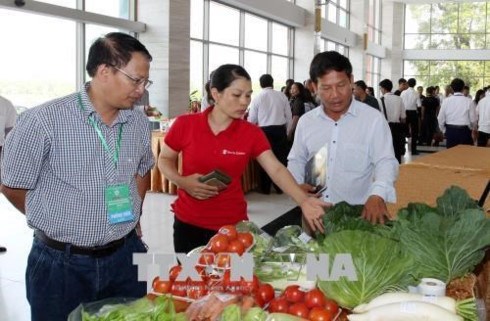The conference aimed at helping Vietnamese localities and firms update information on the Chinese market and customs policies for these products at a pair of international border crossings in Lao Cai and Hekou in China.
    |
 |
|
On the sidelines of the conference |
Vu Ba Phu, Director of the Department of Trade Promotion under the Ministry of Industry and Trade, said Vietnam holds substantial potential in its agro-aquatic products and fruits, supplying the demand of both domestic and international markets, including China.
Lao Cai, located at the center of the North-South Corridor in the Greater Mekong region, connects Vietnam with Yunnan province and the southwest region of China.
In the first six months of 2018, the value of import-export via Lao Cai exceeded USD 1.55 billion, up 29 percent year-on-year. Of the sum, the export of fruits and agro-aquatic products brought in more than USD 306 million.
Huang Shan, of Yunnan’s Department of Commerce, attributed the high growth of Yunnan-Vietnam trade to the signing of an agreement on border trade development that is based on mutual benefit and support.
According to her, Yunnan mostly imports Vietnamese fruits and seafood, while Vietnam has high demand for Yunnan’s vegetables and fruits.
She informed participants of the conference on Yunnan’s import policies targeting Vietnamese farm produce, fruits, and aquatic products.
To boost trade between Yunnan and Vietnamese localities, Huang proposed both sides speed up customs clearance and reduce administration fees to cut logistic costs.
She suggested Vietnam work to expand its share in the seafood market of China’s Southwest and Northwest regions.
Le Ngoc Hung, Vice Chairman of the Lao Cai People’s Committee, stressed the province’s commitment to helping enterprises handle bottlenecks and improve the local business climate.
At the conference, 12 provincial Departments of Industry and Trade of Vietnam signed a memorandum of understanding with Yunnan’s Department of Commerce on trade development cooperation in a bid to capitalize on the potential of the Kunming (Yunnan)-Lao Cai-Hanoi-Hai Phong-Quang Ninh economic corridor.
Source: VNA